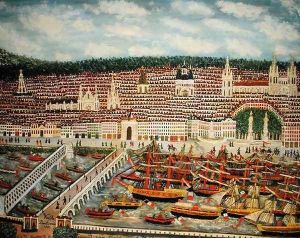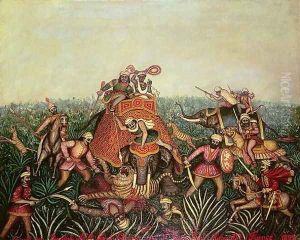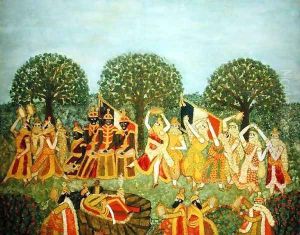Jean-Baptiste Guiraud Paintings
Jean-Baptiste Guiraud was a French sculptor and medalist born in 1866, in a period marked by the flourishing of the arts in France, particularly during the Belle Époque. He trained at the École des Beaux-Arts in Paris, which was the hub for aspiring artists to learn from established masters of the time. Guiraud studied under renowned sculptors such as Alexandre Falguière and Antonin Mercié, which strongly influenced his style and approach to sculpture.
Guiraud's work was part of the academic art movement, which emphasized a traditional approach to art, focusing on highly finished works that conformed to the standards set by the French Academy of Fine Arts. His sculptures often featured allegorical themes, classical subjects, and were characterized by their refined detail and formal composition. He was known to work with a variety of materials including bronze, marble, and stone.
One of Guiraud's notable contributions to the art world was his participation in the decoration of the Petit Palais for the 1900 Exposition Universelle in Paris, which was an event that showcased the height of French cultural and artistic influence. His work was exhibited in various Salons, where he achieved recognition and was awarded prizes for his contributions to French sculpture.
Though not as widely recognized today as some of his contemporaries, Jean-Baptiste Guiraud was a respected artist of his time. His career spanned several decades, during which he witnessed the transition from the opulence of the Third Republic to the more sobering times of the early 20th century, including the two World Wars.
Jean-Baptiste Guiraud passed away in 1953, leaving behind a legacy of classical sculptures that continued to inspire and influence the academic art world. His works can be found in museums, public spaces, and private collections, serving as a testament to his skill and dedication to the traditional values of artistic expression during a vibrant period in French art history.


